Markus Jonscher
Centroid adapted frequency selective extrapolation for reconstruction of lost image areas
Jan 12, 2023Abstract:Lost image areas with different size and arbitrary shape can occur in many scenarios such as error-prone communication, depth-based image rendering or motion compensated wavelet lifting. The goal of image reconstruction is to restore these lost image areas as close to the original as possible. Frequency selective extrapolation is a block-based method for efficiently reconstructing lost areas in images. So far, the actual shape of the lost area is not considered directly. We propose a centroid adaption to enhance the existing frequency selective extrapolation algorithm that takes the shape of lost areas into account. To enlarge the test set for evaluation we further propose a method to generate arbitrarily shaped lost areas. On our large test set, we obtain an average reconstruction gain of 1.29 dB.
Motion-Adapted Three-Dimensional Frequency Selective Extrapolation
Sep 15, 2022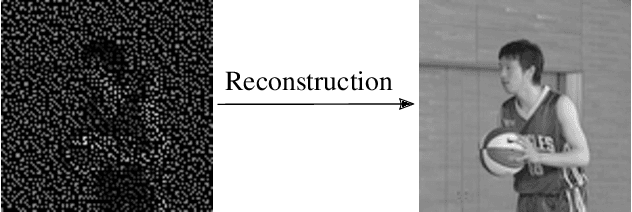
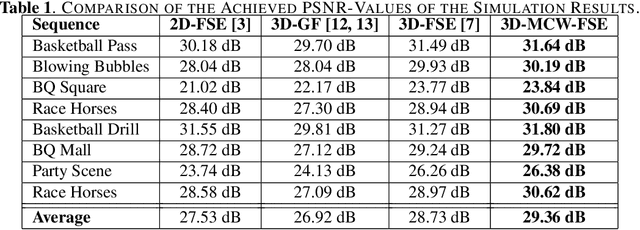
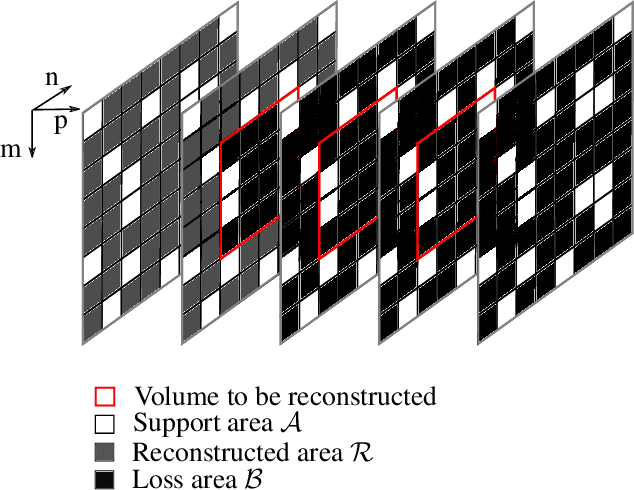
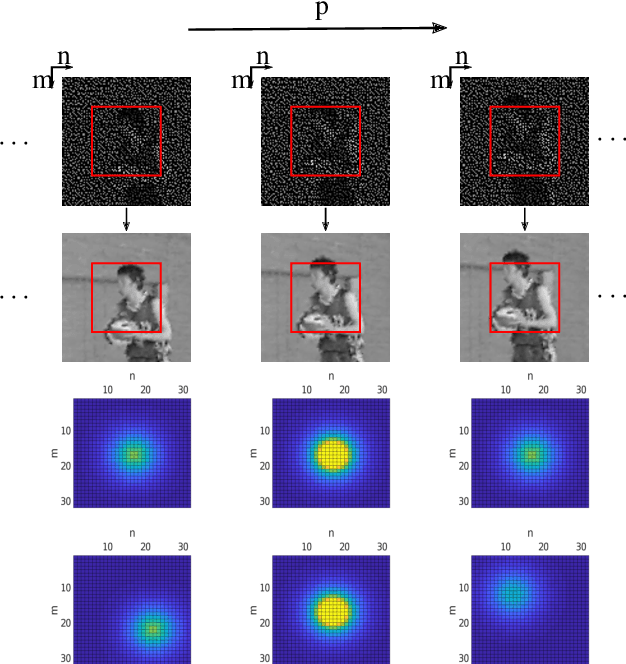
Abstract:It has been shown, that high resolution images can be acquired using a low resolution sensor with non-regular sampling. Therefore, post-processing is necessary. In terms of video data, not only the spatial neighborhood can be used to assist the reconstruction, but also the temporal neighborhood. A popular and well performing algorithm for this kind of problem is the three-dimensional frequency selective extrapolation (3D-FSE) for which a motion adapted version is introduced in this paper. This proposed extension solves the problem of changing content within the area considered by the 3D-FSE, which is caused by motion within the sequence. Because of this motion, it may happen that regions are emphasized during the reconstruction that are not present in the original signal within the considered area. By that, false content is introduced into the extrapolated sequence, which affects the resulting image quality negatively. The novel extension, presented in the following, incorporates motion data of the sequence in order to adapt the algorithm accordingly, and compensates changing content, resulting in gains of up to 1.75 dB compared to the existing 3D-FSE.
Resampling Images to a Regular Grid from a Non-Regular Subset of Pixel Positions Using Frequency Selective Reconstruction
Apr 27, 2022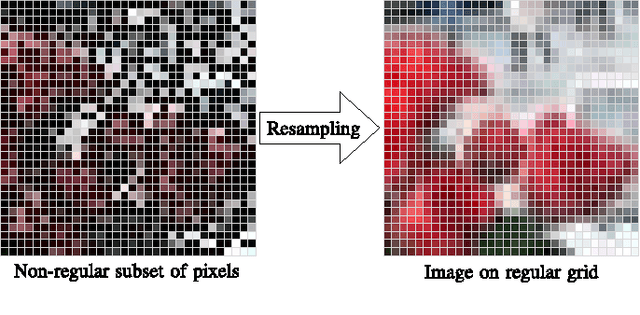
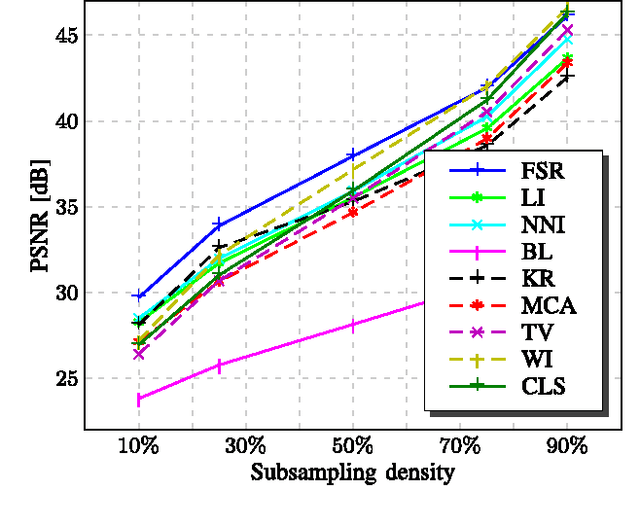
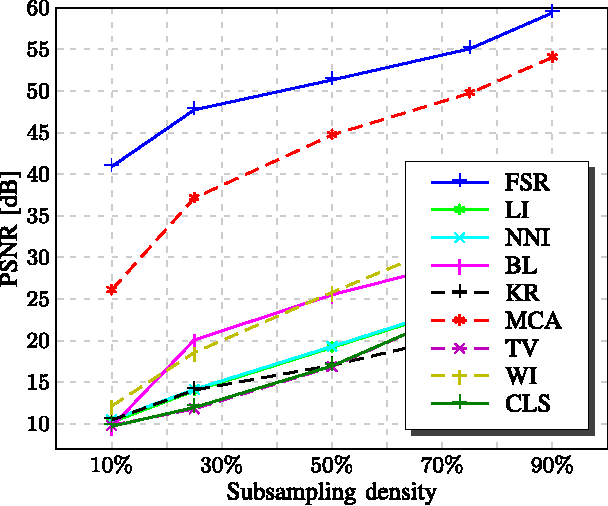
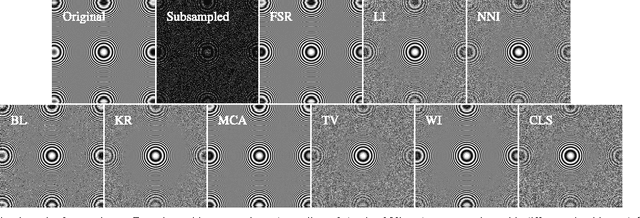
Abstract:Even though image signals are typically defined on a regular two-dimensional grid, there also exist many scenarios where this is not the case and the amplitude of the image signal only is available for a non-regular subset of pixel positions. In such a case, a resampling of the image to a regular grid has to be carried out. This is necessary since almost all algorithms and technologies for processing, transmitting or displaying image signals rely on the samples being available on a regular grid. Thus, it is of great importance to reconstruct the image on this regular grid so that the reconstruction comes closest to the case that the signal has been originally acquired on the regular grid. In this paper, Frequency Selective Reconstruction is introduced for solving this challenging task. This algorithm reconstructs image signals by exploiting the property that small areas of images can be represented sparsely in the Fourier domain. By further taking into account the basic properties of the Optical Transfer Function of imaging systems, a sparse model of the signal is iteratively generated. In doing so, the proposed algorithm is able to achieve a very high reconstruction quality, in terms of PSNR and SSIM as well as in terms of visual quality. Simulation results show that the proposed algorithm is able to outperform state-of-the-art reconstruction algorithms and gains of more than 1 dB PSNR are possible.
Increasing Imaging Resolution by Non-Regular Sampling and Joint Sparse Deconvolution and Extrapolation
Apr 27, 2022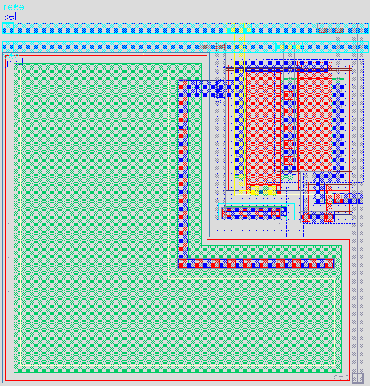
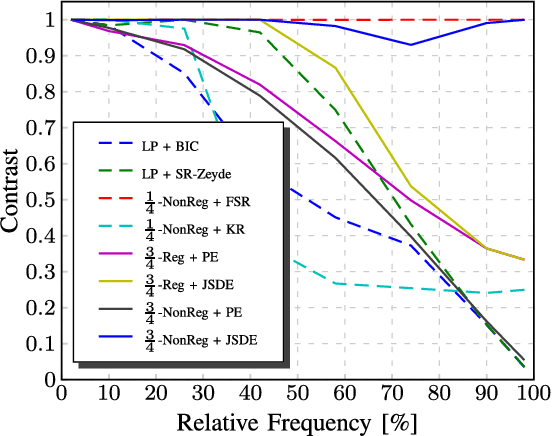

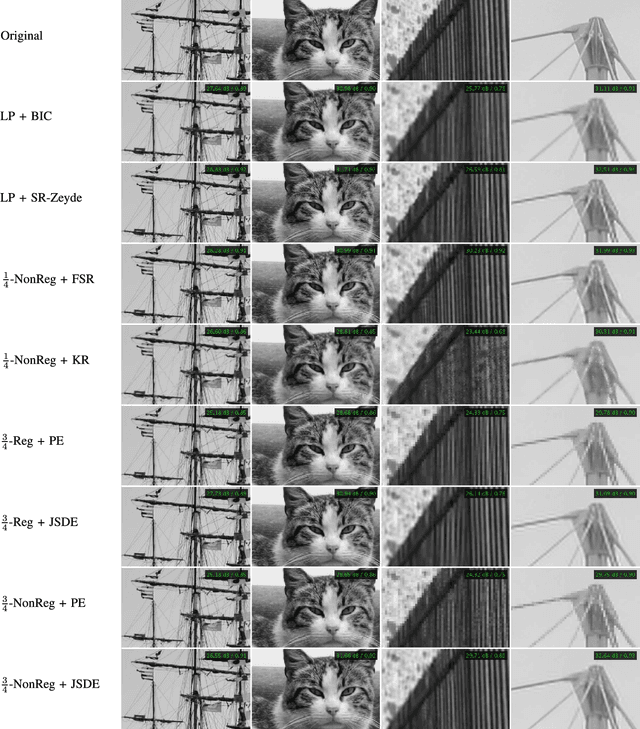
Abstract:Increasing the resolution of image sensors has been a never ending struggle since many years. In this paper, we propose a novel image sensor layout which allows for the acquisition of images at a higher resolution and improved quality. For this, the image sensor makes use of non-regular sampling which reduces the impact of aliasing. Therewith, it allows for capturing details which would not be possible with state-of-the-art sensors of the same number of pixels. The non-regular sampling is achieved by rotating prototype pixel cells in a non-regular fashion. As not the whole area of the pixel cell is sensitive to light, a non-regular spatial integration of the incident light is obtained. Based on the sensor output data, a high-resolution image can be reconstructed by performing a deconvolution with respect to the integration area and an extrapolation of the information to the insensitive regions of the pixels. To solve this challenging task, we introduce a novel joint sparse deconvolution and extrapolation algorithm. The union of non-regular sampling and the proposed reconstruction allows for achieving a higher resolution and therewith an improved imaging quality.
Declipping of Speech Signals Using Frequency Selective Extrapolation
Apr 07, 2022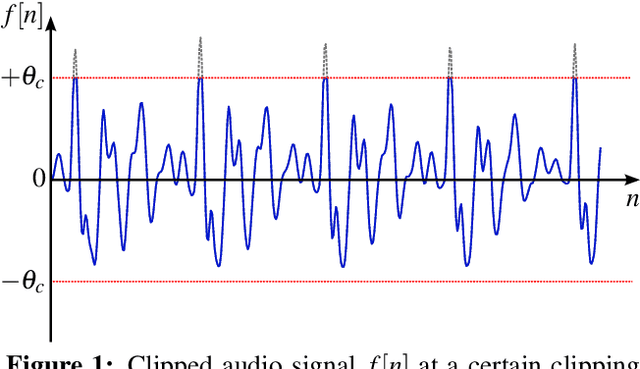
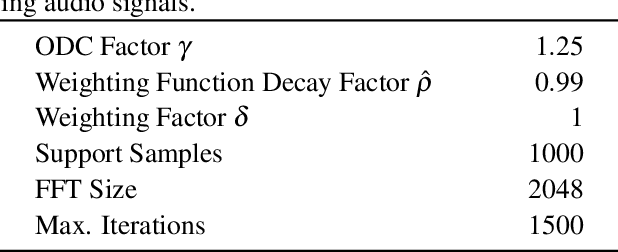
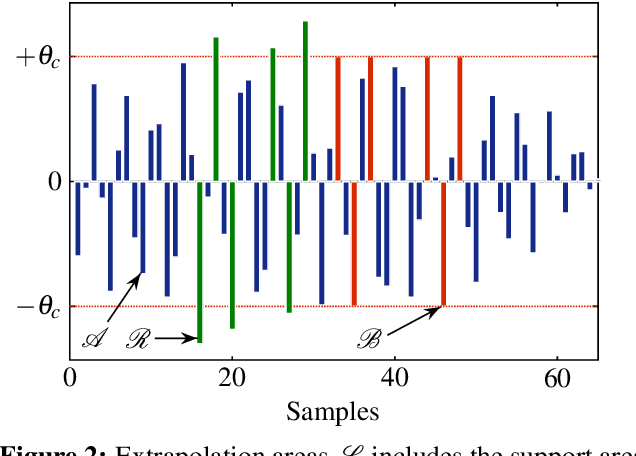
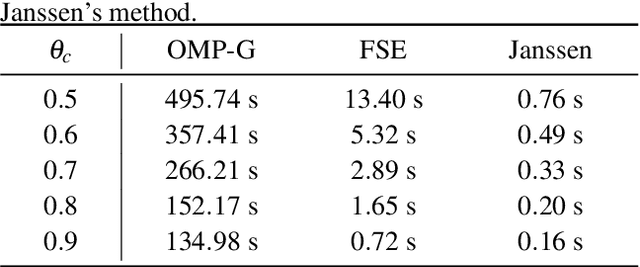
Abstract:The reconstruction of clipped speech signals is an important task in audio signal processing to achieve an enhanced audio quality for further processing. In this paper, Frequency Selective Extrapolation (FSE), which is commonly used for error concealment or the reconstruction of incomplete image data, is adapted to be able to restore audio signals which are distorted from clipping. For this, FSE generates a model of the signal as an iterative superposition of Fourier basis functions. Clipped samples can then be replaced by estimated samples from the model. The performance of the proposed algorithm is evaluated by using different speech test data sets. Compared to other state-of-the-art declipping algorithms, this leads to a maximum gain in SNR of up to 3:5 dB and an average gain of 1 dB.
Reconstruction of images taken by a pair of non-regular sampling sensors using correlation based matching
Apr 07, 2022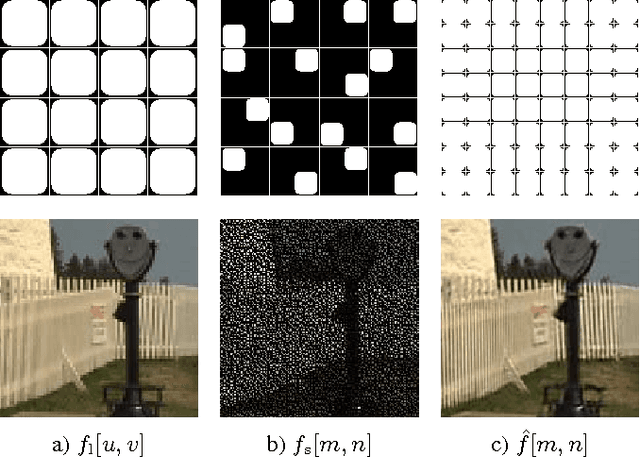


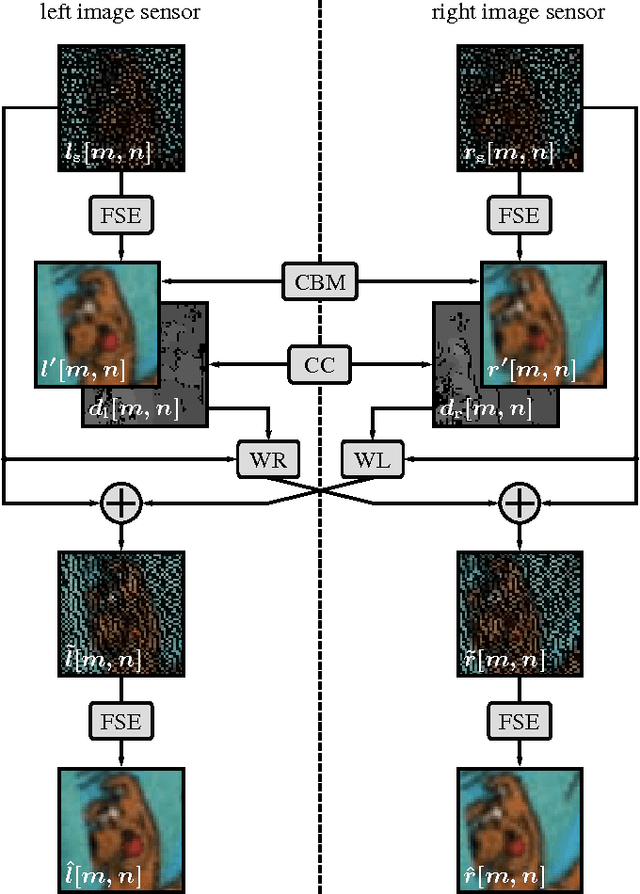
Abstract:Multi-view image acquisition systems with two or more cameras can be rather costly due to the number of high resolution image sensors that are required. Recently, it has been shown that by covering a low resolution sensor with a non-regular sampling mask and by using an efficient algorithm for image reconstruction, a high resolution image can be obtained. In this paper, a stereo image reconstruction setup for multi-view scenarios is proposed. A scene is captured by a pair of non-regular sampling sensors and by incorporating information from the adjacent view, the reconstruction quality can be increased. Compared to a state-of-the-art single-view reconstruction algorithm, this leads to a visually noticeable average gain in PSNR of 0.74 dB.
Reducing Randomness of Non-Regular Sampling Masks for Image Reconstruction
Apr 07, 2022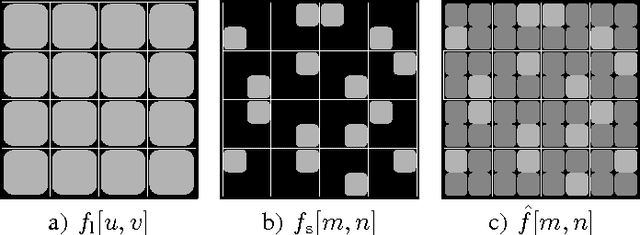
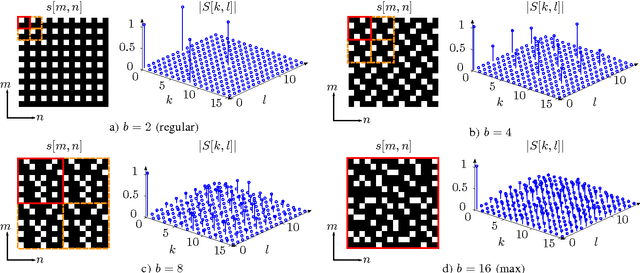
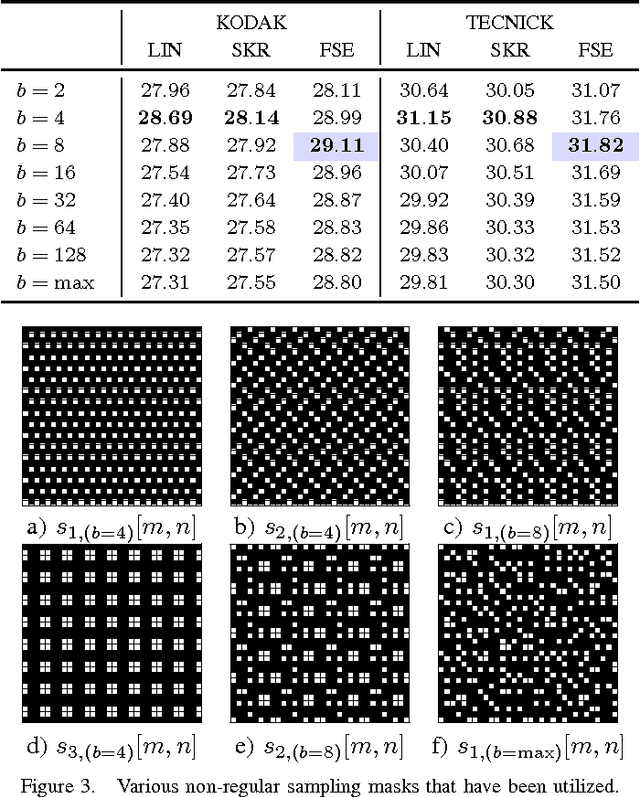

Abstract:Increasing spatial image resolution is an often required, yet challenging task in image acquisition. Recently, it has been shown that it is possible to obtain a high resolution image by covering a low resolution sensor with a non-regular sampling mask. Due to the masking, however, some pixel information in the resulting high resolution image is not available and has to be reconstructed by an efficient image reconstruction algorithm in order to get a fully reconstructed high resolution image. In this paper, the influence of different sampling masks with a reduced randomness of the non-regularity on the image reconstruction process is evaluated. Simulation results show that it is sufficient to use sampling masks that are non-regular only on a smaller scale. These sampling masks lead to a visually noticeable gain in PSNR compared to arbitrary chosen sampling masks which are non-regular over the whole image sensor size. At the same time, they simplify the manufacturing process and allow for efficient storage.
Reconstruction of Videos Taken by a Non-Regular Sampling Sensor
Apr 07, 2022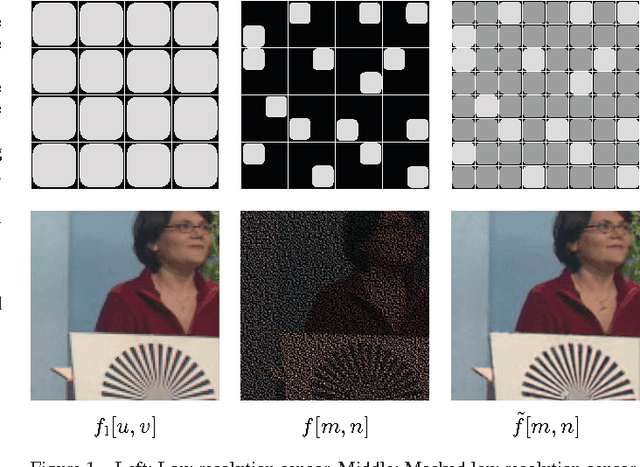
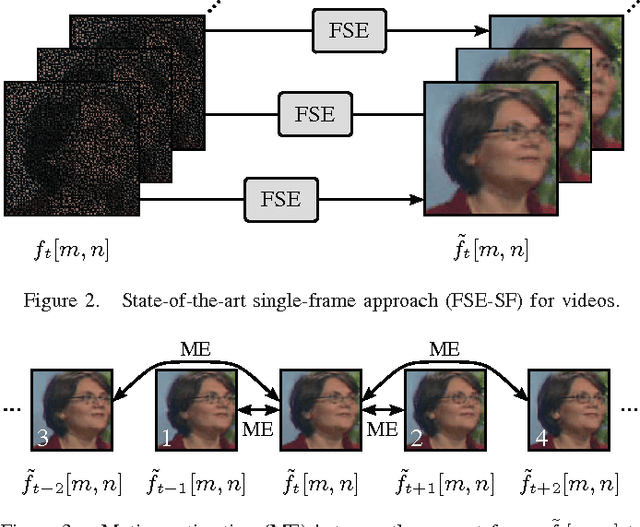
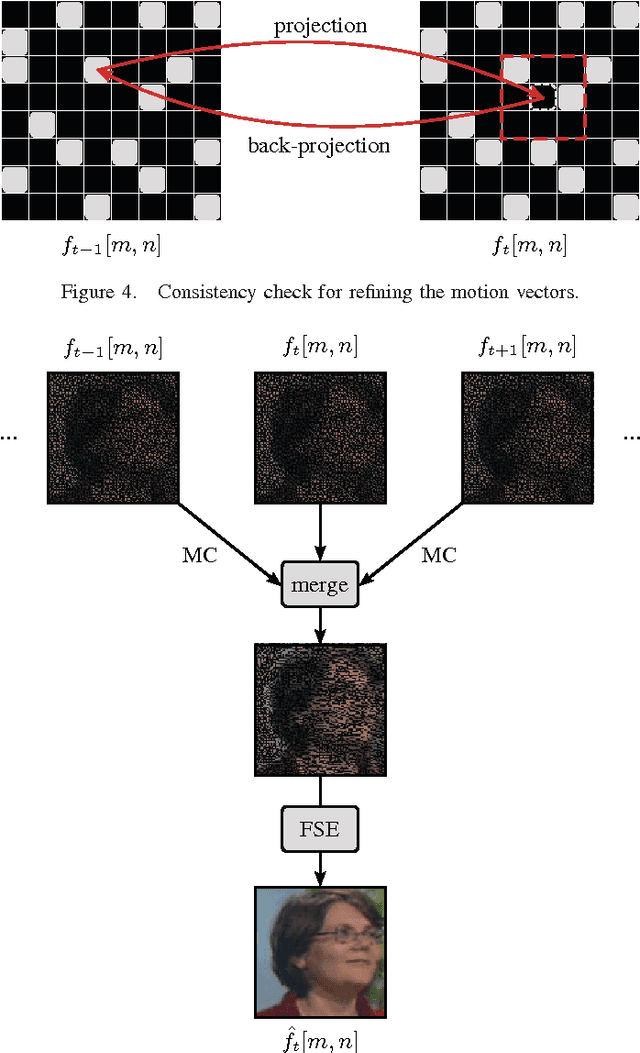
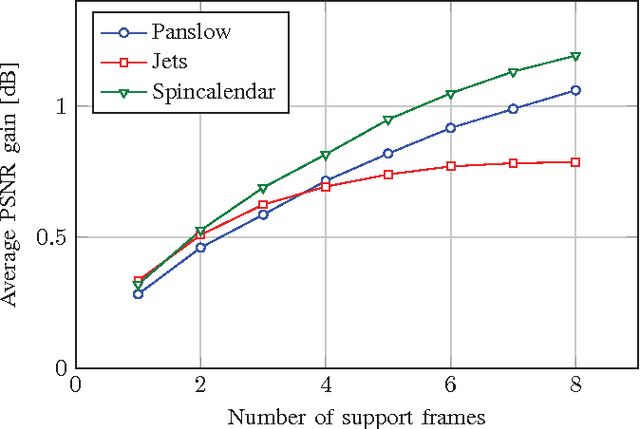
Abstract:Recently, it has been shown that a high resolution image can be obtained without the usage of a high resolution sensor. The main idea has been that a low resolution sensor is covered with a non-regular sampling mask followed by a reconstruction of the incomplete high resolution image captured this way. In this paper, a multi-frame reconstruction approach is proposed where a video is taken by a non-regular sampling sensor and fully reconstructed afterwards. By utilizing the temporal correlation between neighboring frames, the reconstruction quality can be further enhanced. Compared to a state-of-the-art single-frame reconstruction approach, this leads to a visually noticeable gain in PSNR of up to 1.19 dB on average.
Recursive Frequency Selective Reconstruction of Non-Regularly Sampled Video Data
Apr 07, 2022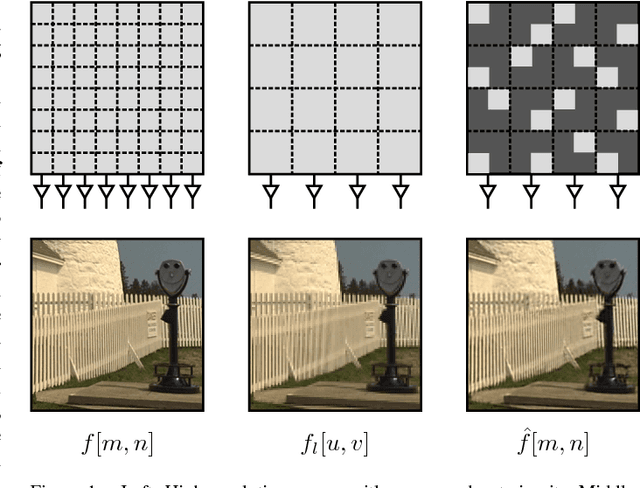
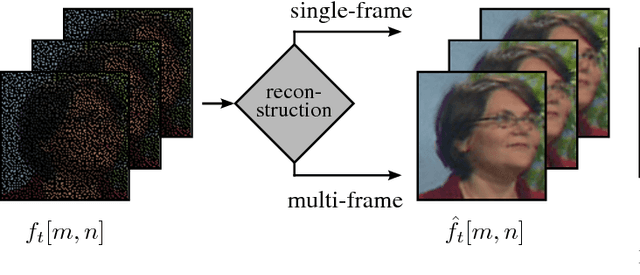
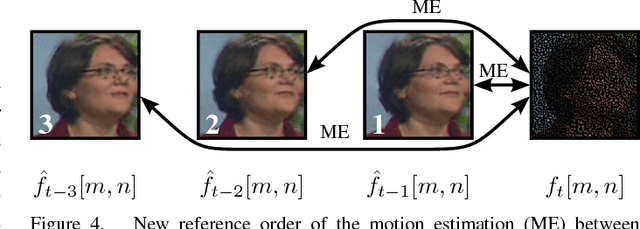
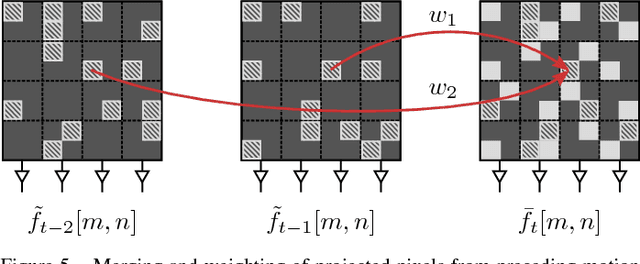
Abstract:High resolution images can be acquired using a non-regular sampling sensor which consists of an underlying low resolution sensor that is covered with a non-regular sampling mask. The reconstructed high resolution image is then obtained during post-processing. Recently, it has been shown that the temporal correlation between neighboring frames can be exploited in order to enhance the reconstruction quality of non-regularly sampled video data. In this paper, a new recursive multi-frame reconstruction approach is proposed in order to further increase the reconstruction quality. By using a new reference order, previously reconstructed frames can be used for the subsequent motion estimation and a new weighting function allows for the incorporation of multiple pixels projected onto the same position. With the new recursive multi-frame approach, a visually noticeable average gain in PSNR of up to 1.13 dB with respect to a state-of-the-art single-frame reconstruction approach can be achieved. Compared to the existing multi-frame approach, a gain of 0.31 dB is possible. SSIM results show the same behavior as PSNR results. Additionally, the pre-reconstruction step of the existing multi-frame approach can be avoided and the new algorithm is, in general, capable of real-time processing.
Dynamic Non-Regular Sampling Sensor Using Frequency Selective Reconstruction
Apr 07, 2022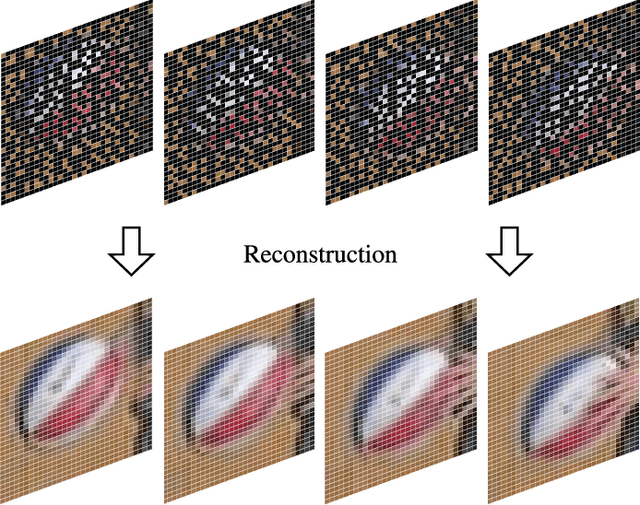
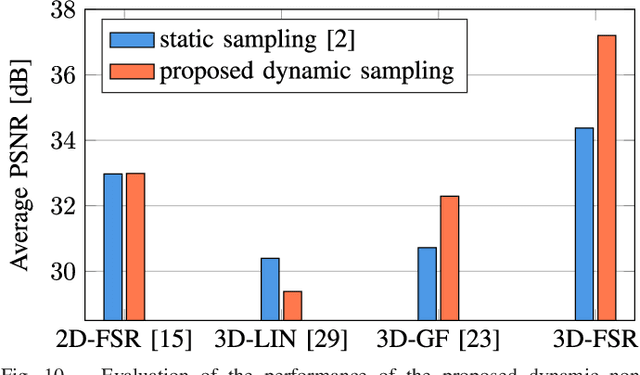
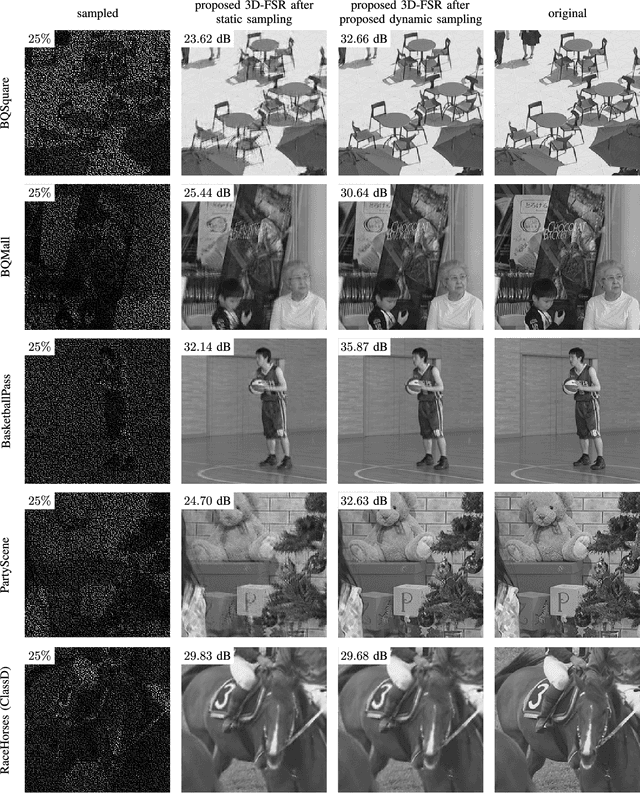
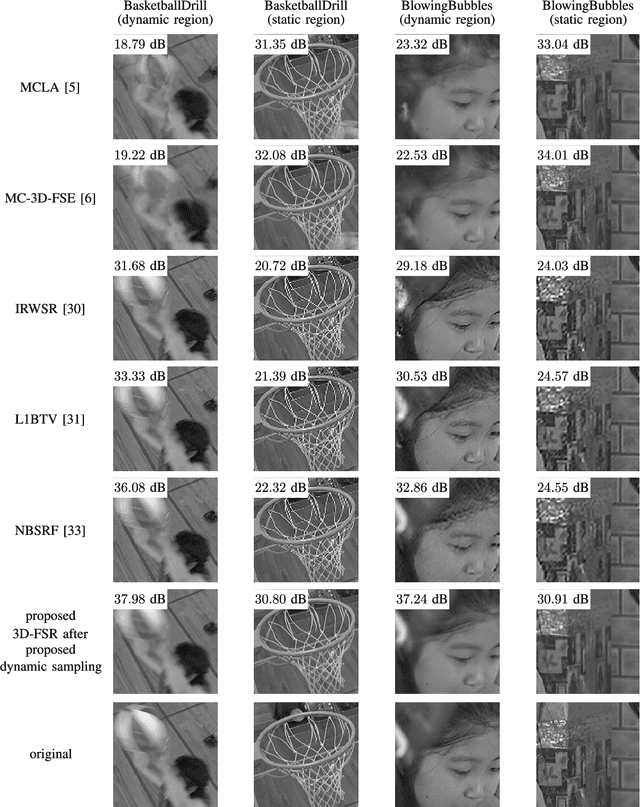
Abstract:Both a high spatial and a high temporal resolution of images and videos are desirable in many applications such as entertainment systems, monitoring manufacturing processes, or video surveillance. Due to the limited throughput of pixels per second, however, there is always a trade-off between acquiring sequences with a high spatial resolution at a low temporal resolution or vice versa. In this paper, a modified sensor concept is proposed which is able to acquire both a high spatial and a high temporal resolution. This is achieved by dynamically reading out only a subset of pixels in a non-regular order to obtain a high temporal resolution. A full high spatial resolution is then obtained by performing a subsequent three-dimensional reconstruction of the partially acquired frames. The main benefit of the proposed dynamic readout is that for each frame, different sampling points are available which is advantageous since this information can significantly enhance the reconstruction quality of the proposed reconstruction algorithm. Using the proposed dynamic readout strategy, gains in PSNR of up to 8.55 dB are achieved compared to a static readout strategy. Compared to other state-of-the-art techniques like frame rate up-conversion or super-resolution which are also able to reconstruct sequences with both a high spatial and a high temporal resolution, average gains in PSNR of up to 6.58 dB are possible.
 Add to Chrome
Add to Chrome Add to Firefox
Add to Firefox Add to Edge
Add to Edge